Jefferson
Pre-War Composition (1938-1942)
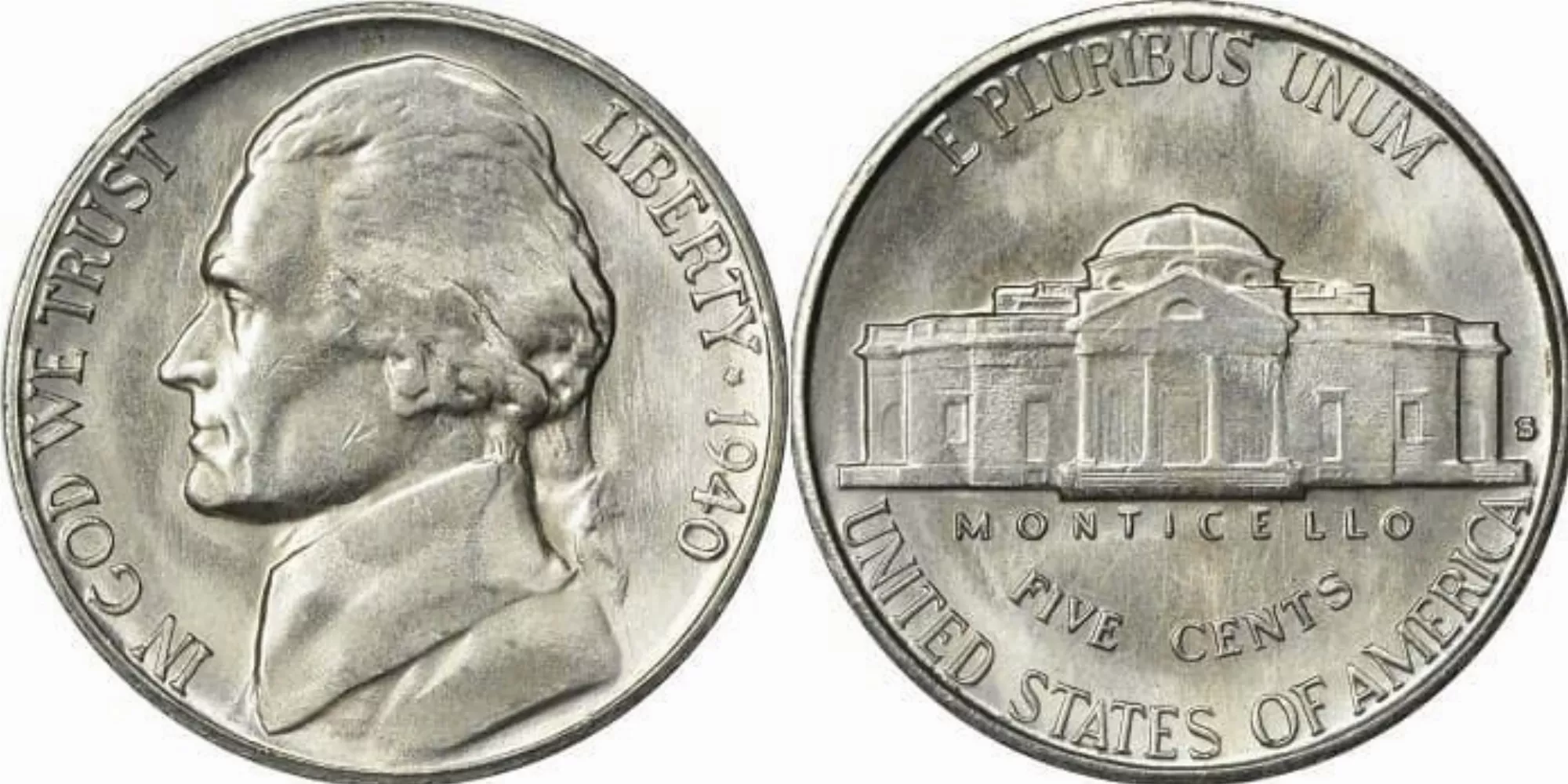
| Designer | Felix Schlag |
|---|---|
| Diameter | 21.2 |
| Weight | 5 |
| Composition | 75% Copper - 25% Nickel |
In January 1938, the Mint announced an open competition for the new nickel design, with the winner to receive a prize of $1,000. Anticipating the 1943 bicentennial of Jefferson's birth, competitors were to place his portrait on the obverse, and a depiction of his house Monticello on the reverse.
On April 24, Felix Schlag was announced as the winner. His design featured the portrayal of Jefferson which would be used on the nickel until 2004, closely conforming to the former president's bust by sculptor Jean-Antoine Houdon, which is to be found in Boston's Museum of Fine Arts. However, the model differs from the nickel that was struck for circulation because it featured a view of Monticello from an angle, and a style of lettering officials did not like; Schlag was required to change both.[87] Either through a misunderstanding or an oversight, Schlag did not include his initials in the design; they would not be added until 1966.[88] Production began on October 3, 1938; they were released into circulation on November 15.[89] According to contemporary accounts, the Jefferson nickel was initially hoarded, and it was not until 1940 that it was commonly seen in circulation.
Wartime Composition (1942-1945)
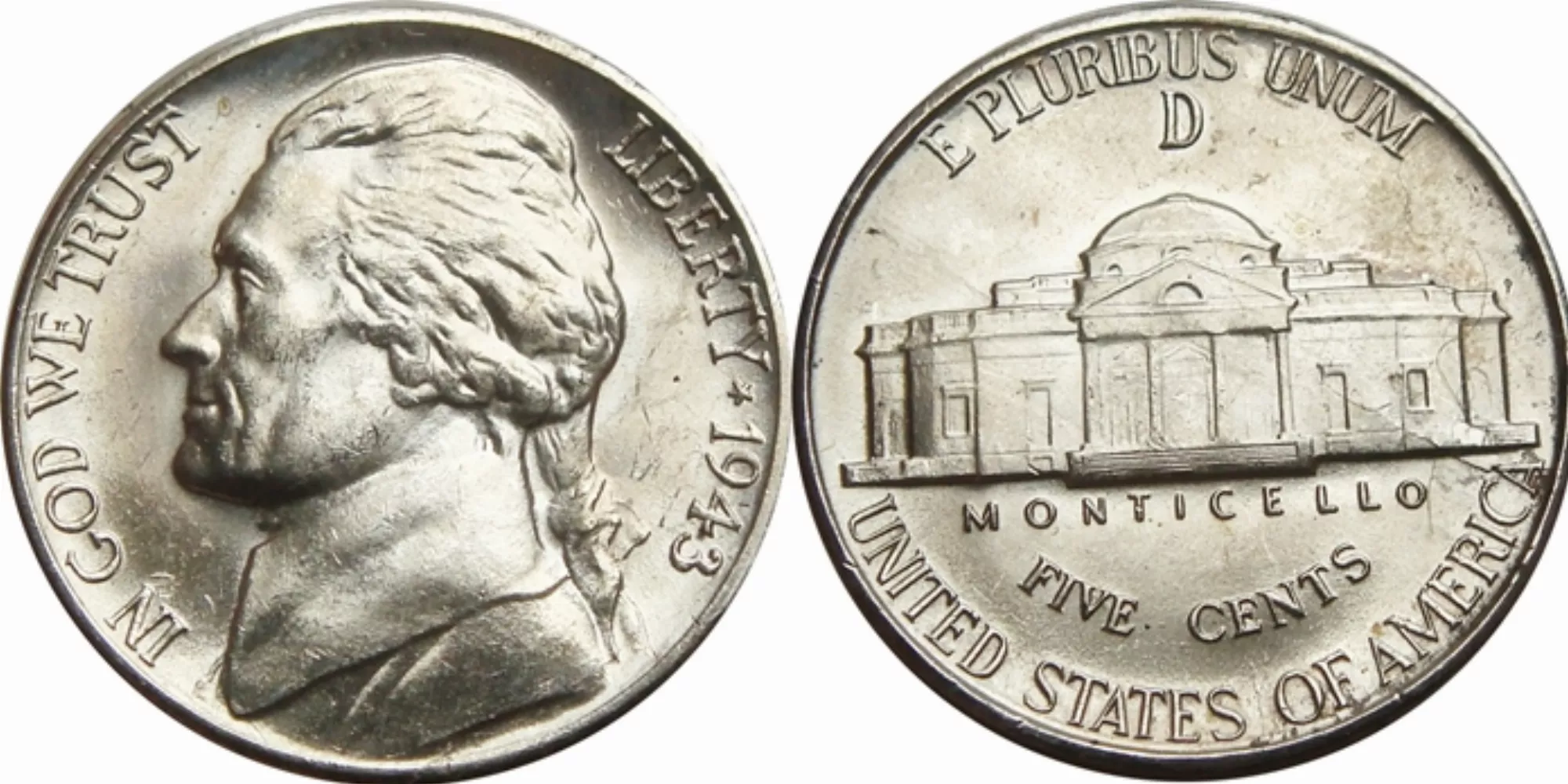
| Designer | Felix Schlag |
|---|---|
| Diameter | 21.2 |
| Weight | 5 |
| Composition | 56% Copper - 35% Silver - 9% Manganese |
With the entry of the United States into World War II, nickel became a critical war material, and the Mint sought to reduce its use of the metal. On March 27, 1942, Congress authorized a nickel made of 50% copper and 50% silver, but gave the Mint the authority to vary the proportions, or add other metals, in the public interest. The Mint's greatest concern was in finding an alloy that would use no nickel, but still satisfy counterfeit detectors in vending machines. An alloy of 56% copper, 35% silver and 9% manganese proved suitable, and this alloy began to be coined into nickels from October 1942. In the hope of making them easy to sort out and withdraw after the war, the Mint struck all "war nickels" with a large mint mark appearing above Monticello. The mint mark P for Philadelphia was the first time that mint's mark had appeared on a U.S. coin.[91] The pre-war composition returned in 1946; all nickels struck since then have been in 75% copper and 25% nickel.
Post-War Composition (1946-2003)
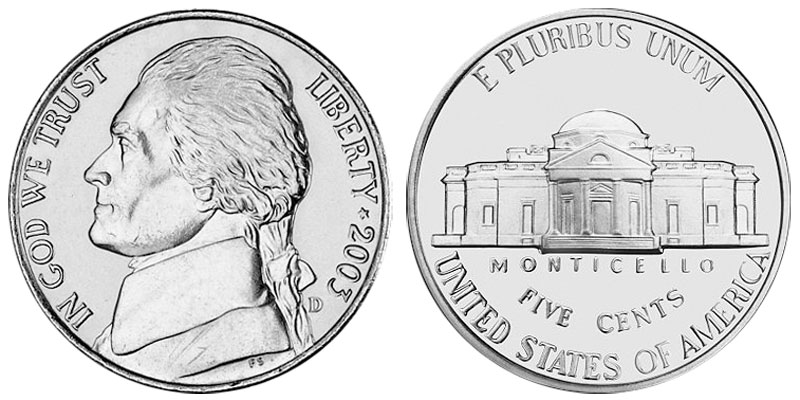
| Designer | Felix Schlag |
|---|---|
| Diameter | 21.2 |
| Weight | 5 |
| Composition | 75% Copper - 25% Nickel |
Westward Journey Series (2004-2005)
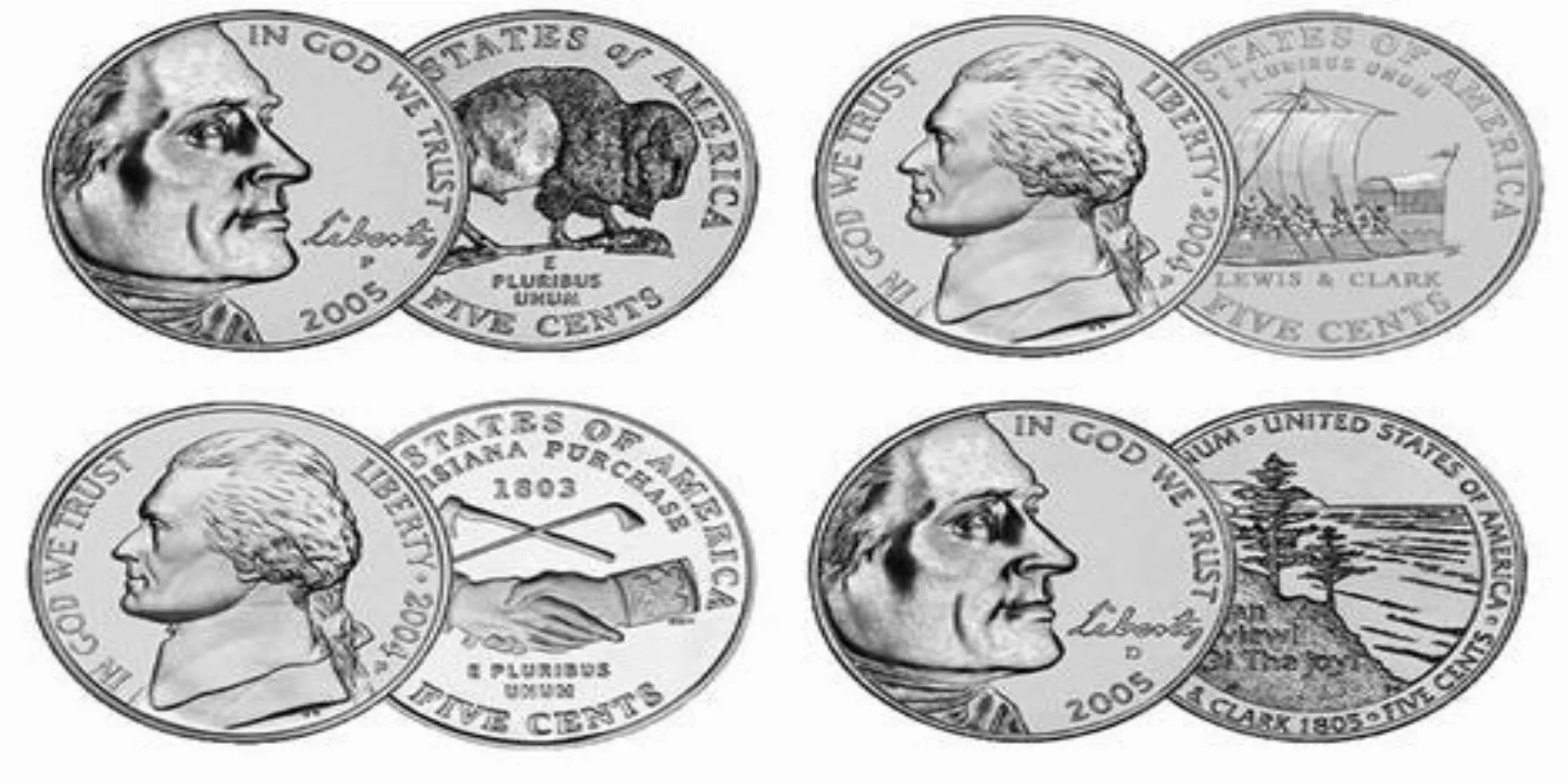
| Designer | Felix Schlag |
|---|---|
| Diameter | 21.2 |
| Weight | 5 |
| Composition | 75% Copper - 25% Nickel |
The Mint had struck circulating commemorative coins for the United States Bicentennial, giving quarters, half dollars, and dollars struck in 1975 and 1976 a dual date, "1776–1976".[95] After Canada issued a successful series of quarters in 1992 honoring its provinces and territories, the Mint obtained congressional permission to issue a series of US quarters honoring American states; they began to be issued in 1999.[96] In 2002, the Mint began to consider redesigning the nickel in honor of the upcoming bicentennial of the Lewis and Clark Expedition. Representative Eric Cantor (R-VA) did not wish to see Monticello (located in his home state) moved permanently off the nickel.[97] The resultant "American 5-Cent Coin Design Continuity Act of 2003", was signed into law by President George W. Bush on April 23, 2003. Under its terms, the Treasury Secretary could vary the nickel's designs in honor of the 200th anniversary of the Expedition and of the Louisiana Purchase, but the nickel would again feature Jefferson and Monticello beginning in 2006.[98] Unless Congress acts again, every future five-cent coin will feature Jefferson and Monticello.
Return to Monticello (2006-Present)
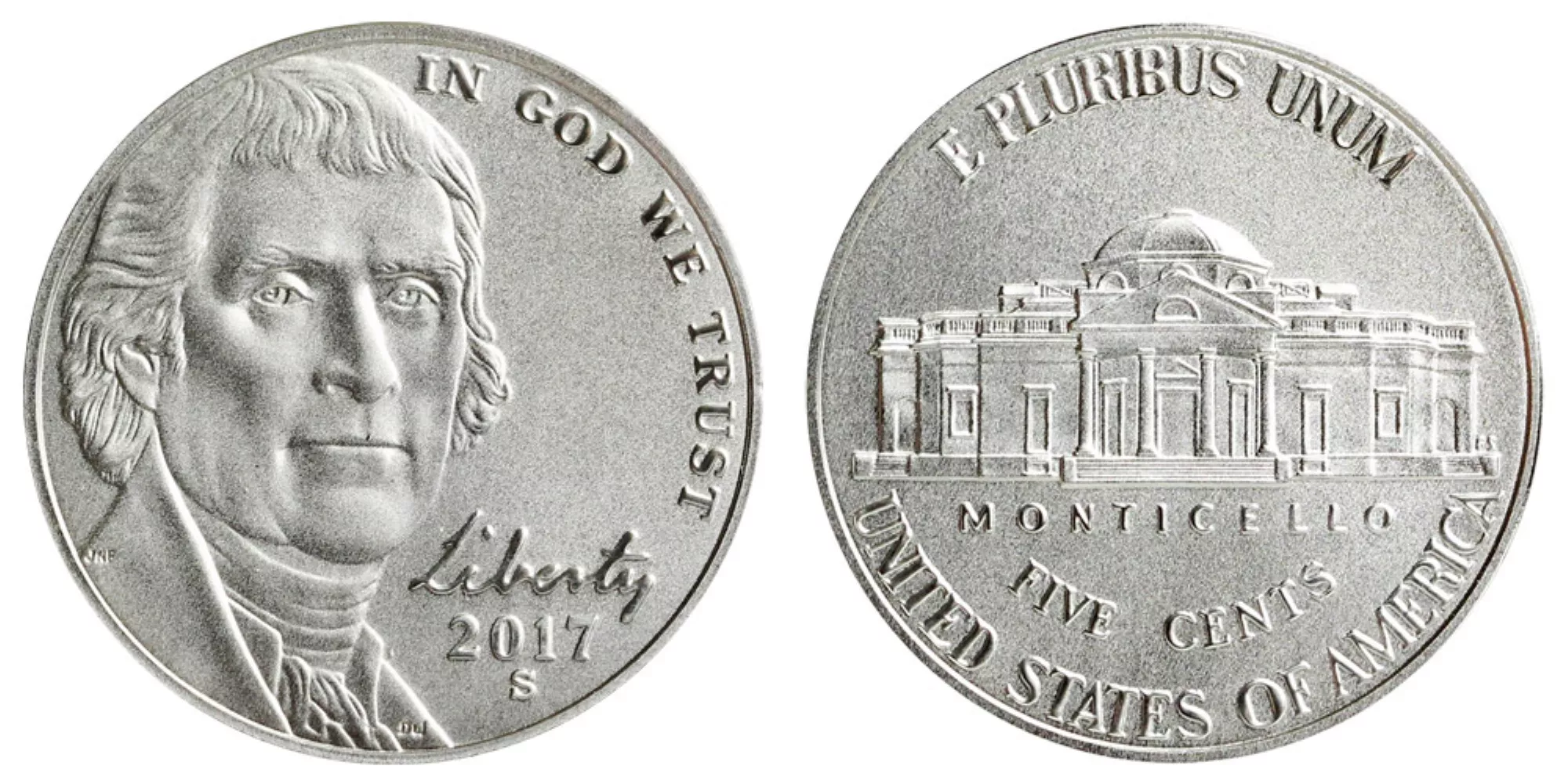
| Designer | Felix Schlag |
|---|---|
| Diameter | 21.2 |
| Weight | 5 |
| Composition | 75% Copper - 25% Nickel |
Another Franki design has, since 2006, been used for the obverse, depicting a view of Jefferson from the front (rather than in profile)[85] based on an 1800 study by Rembrandt Peale, and includes "Liberty" in Jefferson's script. According to Acting Mint Director David Lebryk, "The image of a forward-facing Jefferson is a fitting tribute to [his] vision."[104] The reverse beginning in 2006 was again Schlag's Monticello design, but newly sharpened by Mint engravers.[105] As Schlag's obverse design, on which his initials were placed in 1966, is no longer used, his initials were placed on the reverse to the right of Monticello.